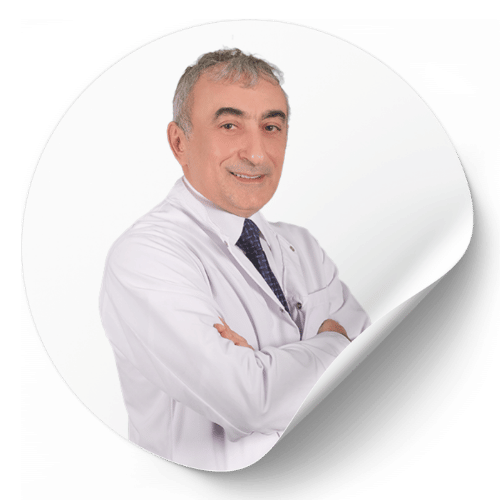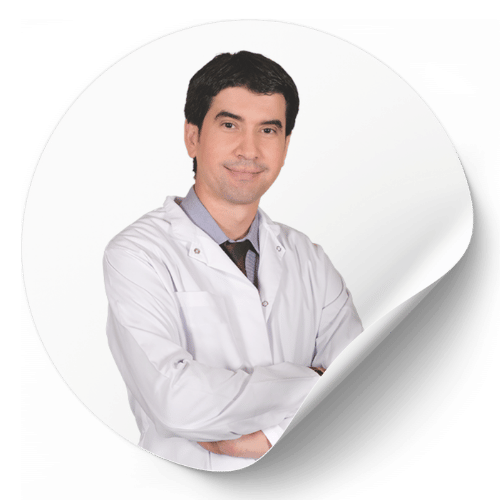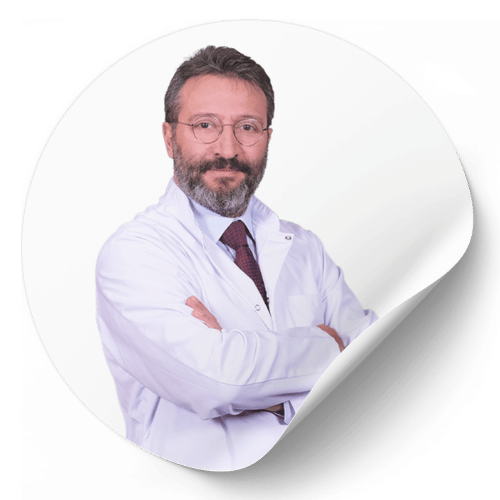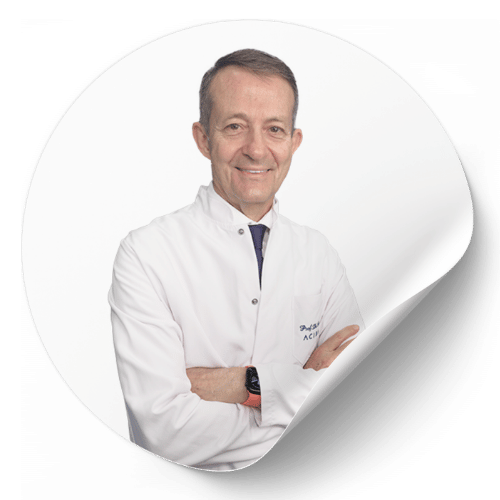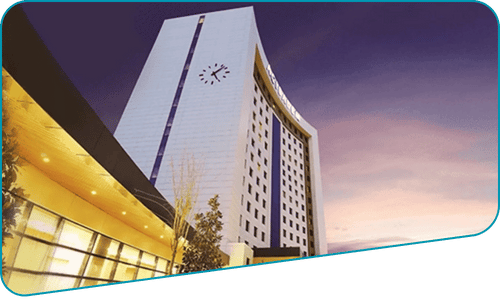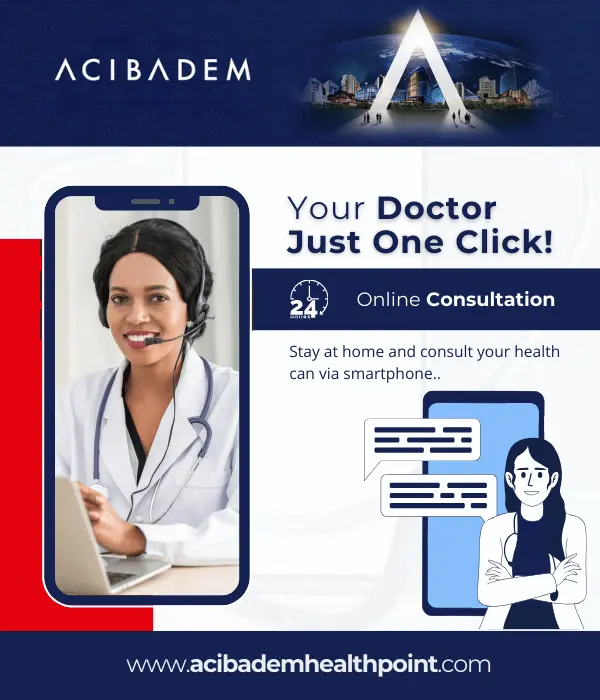Cardiovascular Surgery Departments of Acıbadem Healthcare Group help both kids and adults with heart issues. Our teams keep up with the latest research. They also host seminars to raise awareness about heart health.
Diagnosis and Treatment Services available in Cardiovascular Surgery Department
Acıbadem Healthcare Group’s Cardiovascular Surgery departments offer care for all ages.
Pediatric Cardiovascular Surgery
Our pediatric teams focus on heart diseases in kids, from newborns to teenagers.
They handle all kinds of heart problems in children, like congenital defects and heart rhythm issues.
Adult Cardiovascular Surgery
Adults get care from our team, working closely with other experts.
Cardiology and Cardiac Procedures
At Acıbadem, our Heart Care Center is top-notch. We use the latest technology for heart care in Turkey.
Our team of cardiologists and surgeons work together for the best care. This approach focuses on the patient’s needs.
We offer non-invasive tests and minimally invasive treatments. This includes tests like MRI and ECG, and surgeries like stent placement and bypass.
Common heart conditions
Coronary artery disease
Coronary artery disease is common. It happens when cholesterol and blood pressure damage the arteries.
This buildup blocks blood flow, starving the heart of oxygen. This can cause chest pain and even heart attacks.
Heart attack
A heart attack occurs when arteries block. This damages the heart muscle or can be fatal.
There are two types of risk factors for heart attacks. Some are unchangeable, like age and genetics. Others, like smoking and high blood pressure, can be changed.
The main symptom of a heart attack is chest pain. It’s important to seek help right away if you experience this.
Cardiac valve diseases
The heart has four valves that open and close all the time. If these valves don’t work right, it can cause diseases. These diseases can start at birth or come later in life.
They can happen because of childhood illnesses or aging. Symptoms vary based on which valve is affected. You might feel tired, have a racing heart, or breathe harder than usual.
Early on, doctors might find these diseases by chance. They listen for heart murmurs during check-ups. Later, tests like ECGs and echocardiograms help confirm the diagnosis.
Arrhythmia
Arrhythmia is when the heart beats irregularly. It can happen to anyone, even those without heart problems. Some people don’t notice it until a doctor finds it during a routine check-up.
Others might feel their heart skipping beats or feeling off. They might also get dizzy or tired easily. These symptoms can lead to a diagnosis.
Endocarditis
Endocarditis is an infection of the heart’s inner layer. It can affect the heart valves. Symptoms depend on where in the heart the infection is and the type of bacteria.
Doctors treat it with antibiotics for weeks. Sometimes, surgery is needed to remove blood clots. It’s very important to treat endocarditis, even more so for those with heart conditions.
Cardiomyopathies (heart muscle diseases)
Cardiomyopathies are diseases of the heart muscle. They were defined by the World Health Organization in 1995. There are four main types:
- Dilated cardiomyopathy
- Hypertrophic cardiomyopathy
- Restrictive cardiomyopathy
- Arrhythmogenic right ventricular cardiomyopathy
Many things can cause these diseases. They include heart problems, infections, and genetics. Sometimes, surgery is needed when other treatments don’t work.
Major vascular diseases
- Abdominal aortic aneurysms: Damage to the aortic wall causes the largest artery exiting the heart to expand to 1.5 times its original size in the abdominal area. This is most frequently observed in older men. It occurs at a rate of 2–3 cases in 10,000 people. People who smoke; have familial aneurysms; are elderly; are tall; or have blocked arteries, high cholesterol levels, chronic lung disease, or hypertension are at risk of developing abdominal aortic aneurysms. Abdominal aortic aneurysms are generally asymptomatic. The disease is usually identified when the patient consults a doctor for another medical complaint. Approximately 25% of patients suffer continuous or temporary stomach aches.
- Thoracic aortic aneurysm: These aneurysms form in the aorta in the chest area. A localized expansion of approximately 4 cm is called an aneurysm, and 1–1.5% of patients with thoracic aneurysms are aged 65 and over. Thoracic aneurysms can be triggered by aortic dissections, familial aneurysms, connective tissue disease (Marfan syndrome), trauma, and infectious disease. Thoracic aortic aneurysms are generally asymptomatic. Wide aneurysms can cause pain in the chest, back, and abdomen. Symptoms are similar to those experienced during a heart attack.
- Dissection: Aortic dissection is a tear in the wall of the aorta. Clinical progress may vary depending on the location of the aortic tear. In most patients, the condition is caused by hypertension. It may also develop as a result of various diseases, such as aortic aneurysm, collagen tissue diseases, aortic stenosis, aortic coarctation, and other medical conditions related to the aorta. Symptoms frequently begin with sudden, severe chest and back pain described as a stabbing sensation. This may be accompanied by complaints, such as perspiring, feeling cold or nauseous, or vomiting.
- Peripheral embolisms: Peripheral vascular disease is a narrowing or constriction of veins other than the coronary veins that supply the heart, which is so advanced that not enough blood is supplied to the organs. Diabetes, long-term hypertension, long-term lipid metabolism disorder, a family history of atherosclerosis (vessel stiffness), gout, insufficient exercise, and nicotine addiction are among the risk factors. The most common symptom is pain.
- Vena Constrictions (venous thrombosis): Vena constriction is caused by a small clot in the vein and may be asymptomatic.
Varicose veins
Varicose veins are defined as the expanding, elongating, and twisting of veins in the leg. They are observed in 10–20% of the Western population. The likelihood of varicose veins is proportional to age. As many as 50% of people over 50 suffer from varicose veins.
There are four types of varicose veins:
What are Spider Veins?
- Spider web: These veins settle superficially on the skin. They have a diameter of 1 mm or less, cannot be felt to the touch, and are usually red. They are widespread linear forms in the shape of a star or a spider web and may spread to the whole leg.
- Reticular varicose: It is difficult to feel this type of varicose vein that is slightly swollen on the skin, has a diameter of less than 4 mm, and is blue.
- Great vena varicose veins (saphenous varicose veins): These are varicose veins that are easily felt and seen and that form large twists along the large and small saphenous veins. They have a diameter of less than 3 mm. As they run under the skin, they do not usually change the color of the skin, with only the greenish reflection of the vein visible. The swellings become pronounced when standing and disappear when the feet are raised or while lying down.
- Deep great vein varicose: Deep veins are in the deep layer of the leg. Varicose veins cannot be observed on the skin, yet they cause edema and circulation disorders in the leg. Varicose veins are more common in women than men and more common in people with a history of varicose veins in the family than in those without. Varicose veins may occur as a result of obesity, aging, pregnancy, menopause, prolonged standing, and constriction and valve disorders in the deep veins. The exact cause of varicose veins is unknown. The primary cause is the enlargement of the vein due to structural deformation of the vein wall. This leads to a reverse flow of blood due to a malfunctioning valve in the vein. This reverse flow makes it more difficult for blood to return to the heart, gradually increasing the pressure in the vein. The increase in pressure further enlarges the veins, creating a vicious cycle. Varicose veins have fewer common causes. In individuals with a constricted deep in, the superficial vein that carries 10% of the blood in the leg assumes the entire return of the venous blood in the leg. This causes the diameter to increase, forming varicose veins.
Heart care services in Acıbadem Healthcare Centers includes;
Cardiovascular embolism
- Effort test
- Coronary CT angiography
- Myocardial perfusion scintigraphy
- PET
- Coronary angiography
- Coronary stent and balloon angioplasty
- Coronary bypass
- Robotic coronary bypass
- Small incision coronary bypass
Cardiac valve disease
- ECG
- Angiography and catheterization
- Percutaneous valvuloplasty
- The catheter method and TAVI
- Robotic valve surgery
- Valve surgery with a small incision
Arrhythmia
- Holter monitorization
- Diagnostic electrophysiology study
- Catheter ablation
- Implanting a permanent and temporary pacemaker
- AICD Implantation
- Pacemaker implantation with three chambers
Aorta vascular disease
- Endovascular aneurysm repair
- Thoracic endovascular aneurysm repair
- Hybrid treatment
- Surgical repair
- TAVI
Peripheral embolisms
- Doppler ultrasound
- BT Angiography
- MRI
- Digital subtraction angiography
- Stent application in the carotid aorta
- Endarterectomy in the carotid aorta
- Peripheral surgical bypass
- Peripheral endoluminal bypass
Varicose
- Transdermal laser
- Sclerotherapy
- Varicose surgery
- Endovenous varicose surgery
Cardiomyopathy
- Interventional treatment (ablation)
- Surgical treatment
Congenital heart diseases
- Pediatric cardiology
- Pediatric heart surgery
- Treatment of congenital cardiac diseases with catheterization
Cardiac Rehabilitation
Why should you choose Acıbadem Heart Care Center?
At the Acibadem Healthcare Group, we’ve been checking our work quality for 20 years. We focus on making our patients safe and happy. We use our scores to get better at caring for you.
- The EuroSCORE criteria say the risk of heart surgery is 3.8%, but we’re at 1.6%.
- For coronary bypass, the risk is 2.7%, but we’re at 1.0%.
- Older patients or those with health issues face higher risks. We use scores to understand these risks better.
- We offer top-notch care for heart diseases in adults and kids.
Robotic and minimally invasive cardiac surgery
Robotic heart surgery is rare worldwide. But Acibadem Maslak Hospital is a leader in this field. We’ve made history with robotic surgeries in Turkey.
Our use of the da Vinci robot at Acibadem Maslak Hospital is a first:
- First aneurism of the left ventricle of the heart
- First complicated mitral valve repair in Turkey
- First mitral valve replacement
We use robots for coronary artery surgery on patients without vascular disease. We also do mitral and tricuspid valve repairs. Our success rate in robotic surgery is 90%.
Why should you choose robotic and minimally invasive heart surgery?
- Less bleeding
- Decreased need for blood transfusion
- Less pain
- Lower infection risks
- Shorter hospital stay
- Faster recovery
- Better aesthetic results
Advantages of robotic and minimally invasive surgery
The success rate of operations increases thanks to the three-dimensional camera. This camera makes it easy to see hard-to-observe locations. The robot’s arms can turn 540 degrees and move in six directions.
Because the devices used are tiny, they can reach places a human hand can’t. For example, fixing the cardiac valve is more successful with this method. Patients feel less pain because the surgery is done with tiny incisions.
With tiny incisions, patients can be discharged within 1–2 weeks. This is even after the most complicated surgery. Minimal damage at the surgery sites means patients can get back to normal activities quickly.
Zones of hemorrhage can be clearly seen with the three-dimensional, high-resolution cameras. This minimizes blood loss and eliminates the need for blood transfusions.
Also, there’s no risk of a displaced or infected breastbone because the breastbone isn’t cut through. Maslak Hospital has been a pioneer in robotic cardiac surgery, achieving world firsts in Turkey.
Heart condition diagnosis and treatment
Interventional methods
Coronary angiography is the most reliable method to test arterial constriction. It provides a functional assessment using supplementary techniques. This method is used in patients with suspected coronary constriction or those scheduled for stent or balloon angioplasty.
The procedure is performed in the catheter laboratory, requiring hospitalization. Patients don’t feel pain during the procedure, only a warm sensation from the radio-opaque substance. It’s usually short, lasting 5–10 minutes, with a very low mortality rate (<0.1%). Afterward, patients need to be monitored for two to six hours in the hospital.
Wrist angiography is a key diagnostic tool for cardiovascular diseases. It can be done from the wrist instead of the inguinal region. It’s preferred for patients with vein constriction in the inguinal region or excessive weight.
Vein complications are rare after wrist angiography. Patients can sit, walk, and eat immediately after. They can return to their daily life on the same day.
Treatment
Coronary angioplasty and stent application widen constrictions in coronary arteries. A guide wire is inserted into the coronary veins. A deflated balloon is then slid through until it reaches the constriction.
When inflated, the balloon removes the constriction. This method isn’t suitable for every coronary constriction. For some, bypass surgery might be necessary, while medication can be effective for others. Specialists should make these decisions.
Bypass surgery: Doctors might suggest coronary artery bypass surgery for severe blockages. This surgery improves blood flow to the heart. It can give patients a second chance at life.
During the surgery, a new path is created for blood to reach the heart. If more than one artery is blocked, more than one bypass is needed. The graft, usually from the chest, arm, or leg, is attached to the blocked artery.
Small incision surgery: Endoscopic surgery is a less invasive option. It uses special tools through a small chest incision. This method allows for quicker recovery and less scarring.
It’s suitable for various heart issues, including valve repair and rhythm treatment. Patients can quickly return to their active lives. But, it depends on the heart’s anatomy and the sternum’s structure.
TAVI: This method implants a new valve in the heart without open surgery. Biological valves are used worldwide. The valve is placed in a stent and opened to fit the heart’s valve area.
There are two techniques for TAVI. One uses a catheter from the groin to the heart. The other makes a small chest incision for access. Both methods don’t require stopping the heart or open surgery.
After TAVI, patients rest for 4–5 days before discharge. They then gradually return to their daily lives. TAVI is ideal for high-risk patients who can’t handle open surgery.
It’s also for those with other surgery obstacles. TAVI has proven to extend life and improve health in such cases. It’s becoming more common due to technological advancements.
TAVI at Acibadem: TAVI has been used globally, including in the USA and Europe, starting in 2010. It was first used in Turkey in 2009. Acibadem’s team has the equipment for this treatment and successfully performs TAVI.
Diagnosis and treatment options
Early diagnosis of heart disease is key for successful treatment. Regular check-ups and monitoring are essential. At Acibadem Heart Care Centers, we use advanced equipment for diagnostics and treatment.
Electrocardiography
An ECG is a tool that records the heart’s electrical activity. It helps check how well the heart muscle works. This test is quick and useful in emergencies.
It’s key in finding heart problems, like irregular heartbeats and structural issues. Doctors can quickly understand the ECG results.
The Exercise electrocardiogram
This test is done on a treadmill. It uses ECG recordings from electrodes on the chest while exercising. It lasts 5–10 minutes, depending on the patient’s age and health.
It checks how the heart works when it’s under stress. It helps spot heart problems that don’t show symptoms. Only experienced doctors should interpret these tests to avoid mistakes.
Echocardiography
Echocardiography uses sound waves to look at the heart. It checks the heart’s structure, function, and valves. It’s safe and painless for patients.
It can see the heart’s movement and muscle growth. It’s great for finding heart problems in babies and adults. There are no risks, and it’s easy to use.
Holter monitorization
A Holter monitor tracks the heart’s rhythm or blood pressure. It’s like a small phone that records ECG and blood pressure. It stays on the patient for 24 hours or more.
It’s used to see how the heart and blood pressure act in daily life. Doctors use it when they think there might be heart rhythm or blood pressure issues.
Trans-telephonic monitor
This device is like a Holter monitor but for longer periods. It’s used for patients who rarely have symptoms. It works over the phone.
Stress echocardiography
This test is done during exercise. It checks the heart’s function and can spot heart problems. It’s useful for diagnosing heart diseases and other issues.
It’s often used with the effort ECG to find heart disease locations. It helps doctors understand the heart’s condition.
Myocardial perfusion scintigraphy
This test looks at blood flow in the heart. It shows how the heart handles blood under stress and at rest. It’s good for finding serious heart diseases.
It’s very accurate in spotting severe heart problems. The test also gives information on heart function and risk of death. It helps doctors decide the best treatment.
Flash computed tomography
Flash CT is a way to see inside the body using X-rays. It makes detailed pictures of the body, focusing on the heart and lungs. It’s faster than older methods, taking half the time to get images.
It can scan the heart in just 250 milliseconds, with 99% accuracy. This means it works even when the heart beats fast. It also uses the least amount of radiation, making it safer.
Cardiac scans with Flash CT need 80% less radiation than other methods. It’s a safe way to check the heart without surgery.
Cardiac magnetic resonance imaging
The MRI test gives important info on heart problems. It looks at the heart’s main arteries and cavities. It works well with echocardiography without harming the patient.
It shows how well the heart works and if it’s damaged. MRI is the best for checking heart muscle disease. It uses no radiation or ultrasound, showing organs clearly.
Positron emission tomography-computed tomography
PET-CT is a test that checks how well the heart works. It mainly looks at the heart’s cells and how they function. It helps decide if surgery is needed for high-risk patients.








